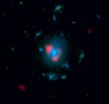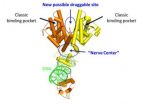(Press-News.org) Boston, MA – New research from Harvard School of Public Health (HPSH) shows that one year after the federal government passed a law banning word descriptors such as "light," "mild," and "low" on cigarette packages, smokers can still easily identify their brands because of color-coding that tobacco companies added to "light" packs after the ban. These findings suggest that the companies have, in effect, been able to evade the ban on misleading wording—thus still conveying the false and deceptive message that lights are safer than "regular" cigarettes.
In addition, the companies failed to apply for applications to have these products approved as "new products" as called for by the law.
The study was published online March 13, 2013 in Tobacco Control.
"The tobacco industry was found guilty by a federal court in 2006 for deceptively promoting 'light' cigarettes as safer after countless smokers who switched to lights died prematurely, thinking they had reduced their health risks. After a new federal law was passed in 2009 to end the tobacco industry's deceptive marketing practices, the industry has apparently circumvented it by using new and sophisticated ways to deceive consumers and has not sought Food and Drug Administration approval for these products as required by law," said study co-author Gregory Connolly, director of the Center for Global Tobacco Control at HSPH and professor of the practice of public health in the Department of Social and Behavioral Sciences.
After the U.S. Surgeon General's 1964 report found that cigarette smoking causes disease, tobacco companies began marketing "light" cigarettes with ventilation holes that allowed air to mix with smoke, which the companies said would limit the amount of smoke a person would inhale. However, a 2001 National Cancer Institute (NCI) report found that smokers compensate for the lower smoke yield in "light" cigarettes—and thus ingest as much tar and nicotine as "regular" cigarettes—by smoking more intensely, more often, or by blocking the ventilation holes with their fingers or lips.
In 2006, a U.S. federal court ruled that tobacco companies should be banned from any future use of descriptive words that convey a false health message. The FDA—given the authority to regulate tobacco products in 2009 as part of the Family Smoking Prevention and Tobacco Control Act—subsequently issued its ban.
To see whether the tobacco companies were complying with or circumventing the ban, the HSPH researchers examined retailer manuals from the tobacco company Philip Morris; manufacturers' annual reports filed with the Massachusetts Department of Public Health; national cigarette sales data; and the results of a 2011 national public opinion survey that included questions about smokers' perceptions of their brands being "light" or regular.
The study describes how Philip Morris removed the terms "light," "ultra-light," and "mild" from cigarette packs and substituted new brand names and colors. For example, the "Marlboro Light" brand was renamed "Marlboro Gold," "Marlboro Mild" was renamed "Marlboro Blue," and Marlboro Ultra-light" was renamed "Marlboro Silver." Other tobacco companies made similar changes. The cigarettes themselves remained unchanged, however; the percentage of ventilation in each category of "light" sub-brands was the same after being renamed and given a new color descriptor. Ventilation is the principle determinant of whether a cigarette is called "light."
In addition, the study notes that a Philip Morris brochure for retailers stated, "Some cigarette and smokeless packaging is changing, but the product remains the same. For trade use only: not to be shown or distributed to consumers."
In the public opinion survey, more than 90% of the smoker respondents said that, one year after the FDA ban, they found it either "somewhat easy" (10%) or "very easy" (82%) to identify their usual brand of cigarettes—in other words, they still thought of certain brands as "light" even though the packages did not use the "light" descriptors.
"This study demonstrates the continued attempts of the industry to avoid reasonable regulation of tobacco products. Scrutiny is needed by the FDA and courts to ensure that tobacco manufacturers comply with the law and that their products no longer convey false impressions of reduced risk," said study co-author Hillel Alpert, research scientist in the Department of Social and Behavioral Sciences.
The results will be presented at the annual meeting of the Society of Nicotine and Tobacco research on March 14, 2013 in Boston.
###
Support for the study came from National Cancer Institute grants 3R01 CA125224-03s1rev++ and 2R01 CA087477-09A2.
"Has the tobacco industry evaded the FDA's ban on 'Light' cigarette descriptors?" by Gregory N. Connolly and Hillel R. Alpert, Tobacco Control, online March 13, 2013
Visit the HSPH website for the latest news, press releases and multimedia offerings.
Harvard School of Public Health is dedicated to advancing the public's health through learning, discovery, and communication. More than 400 faculty members are engaged in teaching and training the 1,000-plus student body in a broad spectrum of disciplines crucial to the health and well being of individuals and populations around the world. Programs and projects range from the molecular biology of AIDS vaccines to the epidemiology of cancer; from risk analysis to violence prevention; from maternal and children's health to quality of care measurement; from health care management to international health and human rights. For more information on the school visit: http://www.hsph.harvard.edu
HSPH on Twitter: http://twitter.com/HarvardHSPH
HSPH on Facebook: http://www.facebook.com/harvardpublichealth
HSPH on You Tube: http://www.youtube.com/user/HarvardPublicHealth
HSPH home page: http://www.hsph.harvard.edu
Tobacco industry appears to have evaded FDA ban on 'light' cigarette descriptors
2013-03-14
ELSE PRESS RELEASES FROM THIS DATE:
Ancient, highly active galaxies discovered
2013-03-14
Pasadena, CA — Using information gathered from several telescopes, a team of astronomers, including Carnegie's Eric Murphy, searched the sky for very rarely seen dusty starburst galaxies, formed soon after the Big Bang. These galaxies are characterized by an unusually high rate of star formation. They are much more abundant in the early Universe than previously thought. Two of those identified are among the oldest ever found, indicating that these dusty starbursts likely evolve into the most massive galaxies ever observed in the local Universe. The results are published ...
ALMA finds 'monster' starburst galaxies in the early universe
2013-03-14
Astronomers using the Atacama Large Millimeter/submillimeter Array (ALMA) telescope have discovered starburst galaxies earlier in the Universe's history than they were previously thought to have existed. These newly discovered galaxies represent what today's most massive galaxies looked like in their energetic, star-forming youth. The research is the most recent example of the discoveries coming from the new international ALMA observatory, which celebrates its inauguration today.
The results, published in a set of papers to appear in the journal Nature and in the Astrophysical ...
Lower incidence of genital warts in young girls
2013-03-14
The incidence of genital warts, or condylomata, declined by 93 per cent in girls given the HPV vaccine before the age of 14, according to a Swedish national registry study. The study was carried out by researchers at Karolinska Institutet in Sweden, and published in Journal of the National Cancer Institute.
Using a selection of population-based registries, the researchers at Karolinska Institutet studied 124,000 girls and women in Sweden between 10 and 44 years old who had received the HPV vaccine against condyloma and cervical cancer at some time between 2006 and 2010. ...
Shock treatment can kill -- Clinical trial shows how 'standard' procedure results in children's deaths
2013-03-14
Results from the Fluid Expansion as Supportive Therapy (FEAST) trial in East Africa show that children who are given fluid to treat shock have an increased risk of death due to cardiovascular collapse at 48 hours. These findings in BioMed Central's open access journal BMC Medicine challenge the generally held idea that early and rapid reversal of shock by fluid resuscitation translates into longer-term survival benefits.
The FEAST trial was conducted in six African hospitals across Kenya, Tanzania and Uganda without intensive care facilities. It included 3000 children ...
Tapeworm DNA contains drug weak spots
2013-03-14
For the first time, researchers have mapped the genomes of tapeworms to reveal potential drug targets on which existing drugs could act. The genomes provide a new resource that offers faster ways to develop urgently needed and effective treatments for these debilitating diseases.
Tapeworms cause two of the World Health Organization's 17 neglected tropical diseases; echinococcosis and cysticercosis. The team sequenced the genomes of four species of tapeworm to explore the genetics and underlying biology of this unusual parasite. As an adult it can live relatively harmlessly ...
Computer models predict how patients will respond to HIV drugs
2013-03-14
Results of a study published online in the Journal of Antimicrobial Chemotherapy today (Thursday), demonstrate that computer models can predict how HIV patients whose drug therapy is failing will respond to a new treatment. Crucially for patients in poorer countries, the models do not require the results of expensive drug resistance tests to make their predictions. The study also showed that the models were able to identify alternative drug combinations that were predicted to work in cases where the treatment used in the clinic had failed, suggesting that their use could ...
Drug treatment corrects autism symptoms in mouse model
2013-03-14
Autism results from abnormal cell communication. Testing a new theory, researchers at the University of California, San Diego School of Medicine have used a newly discovered function of an old drug to restore cell communications in a mouse model of autism, reversing symptoms of the devastating disorder.
The findings are published in the March 13, 2013 issue of the journal PLOS ONE.
"Our (cell danger) theory suggests that autism happens because cells get stuck in a defensive metabolic mode and fail to talk to each other normally, which can interfere with brain development ...
ALMA exposes hidden star factories in the early universe
2013-03-14
Some of the brightest galaxies in the universe – infant galaxies that churned out tens of thousands of stars each year at the dawn of the universe – evolved much sooner and in greater numbers than previously thought, according to new measurements obtained by University of Arizona astronomers.
The results are published in a set of papers to appear in the journal Nature on March 14 and in the Astrophysical Journal. The research is the most recent example of the discoveries coming from the new international ALMA observatory, which celebrates its inauguration today. ALMA, ...
Molecule's structure reveals new therapeutic opportunities for rare diabetes
2013-03-14
ORLANDO, Fla., March 13, 2013 – Researchers at Sanford-Burnham Medical Research Institute (Sanford-Burnham) have determined the complete three-dimensional structure of a protein called HNF-4α. HNF-4α controls gene expression in the liver and pancreas, switching genes on or off as needed. People with mature onset diabetes of the young (MODY1), a rare form of the disease, have inherited mutations in the HNF-4α protein. This first-ever look at HNF-4α's full structure, published March 13 in Nature, uncovers new information about how it functions. The study ...
New monoclonal antibody developed that can target proteins inside cancer cells
2013-03-14
NEW YORK, MARCH 13, 2013 – Researchers have discovered a unique monoclonal antibody that can effectively reach inside a cancer cell, a key goal for these important anticancer agents, since most proteins that cause cancer or are associated with cancer are buried inside cancer cells. Scientists from Memorial Sloan-Kettering Cancer Center and Eureka Therapeutics have collaborated to create the new human monoclonal antibody, which targets a protein associated with many types of cancer and is of great interest to cancer researchers.
Unlike other human therapeutic monoclonal ...

